In this age of increasing food trucks and mobile food services, here’s an idea from Suzuki’s British subsidiary which turns the Suzuki Jimny into a mobile coffee bar. The conversion of the compact SUV was carried out by Coffee Latino, which specializes in such projects.
The vehicle has a Chiffon Ivory Pearl metallic finish with Bluish Black roof and is nicknamed ‘Jimny Beans’. It will be used by the company for promotional activities in the UK, offering complimentary coffee at the venues.
The conversion makes maximum use of space within the compact dimensions of the vehicle. The front passenger’s seat was removed to accommodate all the services required which include a 57-litre water tank with 3M filtration system to ensure the water is clean. A compact 12V drawer fridge manufactured by Waeco is also fitted which cools milk to -2 degrees Centigrade.
At events, the vehicle can run on either gas or mains electricity with power inverter and has two additional large capacity 125A/H 12V batteries to assist with power if required. For gas, a LPG tank was installed in the limited space under the rear floor section which required a specially designed exhaust system with side exit pipe. And with its 4×4 drivetrain, the little Suzuki can also be taken off-road to camp sites or the beach for fresh coffee.
The high specification coffee machine, manufactured by Fracino, is fully integrated into the rear section of the vehicle with an aluminium-topped work area and milled aluminium effect panel surround. It has the facility to serve two speciality coffees at the same time via its twin milk frothing units as well as central hot water dispenser for tea.
The Jimny Beans project is typical of the services offered by 15-old family-run Coffee Latino. They offer bespoke and flexible solutions for customers who have different types of vehicles. Additionally, there is also free barista training along with training to operate the equipment safely and properly. For those who want to venture into this type of business, Coffee Latino has lease purchase on its coffee vans, coffee bikes, prosecco vans and other mobile catering solutions.
MINI ideas that were just for laughs on each year’s first day of April
While manufacturers are still developing autonomous vehicles for private use, it is likely that the first such vehicles that can operate entirely on their own will be commercial vehicles. These are already in use in closed sites but eventually, driverless vehicles could also be used on public roads to transport people around.
Motional, a US-based company founded as a US$4 billion joint venture between the Hyundai Motor Group and auto supplier Aptiv, has released details of its first commercial vehicle for fully driverless public ride-hailing services starting in 2023. Referred to as a ‘robotaxi’, it’s adapted from the latest Hyundai IONIQ 5 electric vehicle (EV).
The robotaxi is Motional’s fifth platform, its second one to go driverless on public roads. With ongoing evolution and advancement, the IONIQ 5 robotaxi benefits from the knowledge and data gained over 2.4 million kms in varied road environments, and hundreds of thousands of hours of testing and assessment.
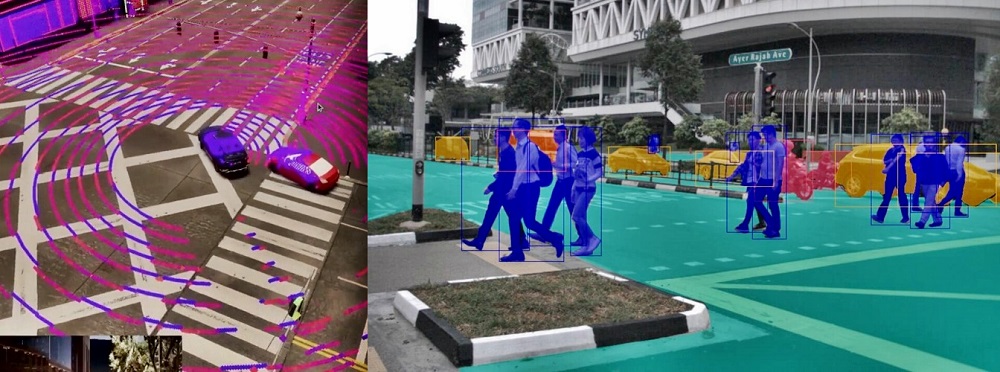
The zero emissions robotaxi is being designed to have SAE Level 4 autonomous vehicle capability, which means it will be able to safely operate without a driver. To be able to operate autonomously with safety, it has more than 30 sensors – a combination of cameras, radars, and Lidar – prominently displayed across the exterior, easily distinguishing the robotaxi from human piloted vehicles.
These sensors provide robust 360-degree perception, high-resolution images, and ultra long-range detection of in diverse driving environments. The robotaxi will be outfitted with Motional’s proven driverless technology, which includes advanced machine learning systems — trained on decades of real-world data — that enables the vehicle to safely navigate challenging and complex driving situations.
The technology-driven design rides on the Hyundai Motor Group’s electric Global Modular Platform (E-GMP) (shown above) which was developed specifically for battery electric vehicles. The platform offers passengers with a spacious interior that will be comfortable to work in, relax, or socialize during their driverless ride.
The interior will also feature a suite of rider-focused interfaces to allow passengers to intuitively interact with the vehicle during their ride, such as directing the robotaxi to make an extra stop. The resulting passenger experience is expected to set a new standard for driverless ride-hailing which will be managed by Lyft, the second-largest ride-sharing company in America after Uber. The robotaxi will be displayed at the IAA Mobility 2021 in Munich in September and services with the vehicle are expected to start in 2023.
Lynk & Co unveiled a 03+ Cyan Edition during the 2021 Chengdu Motor Show this week to celebrate the brand’s racing’s success in the FIA World Touring Car Cup (WTCR), so far claiming three World Titles from 2019 to 2020. The team is currently heading the series at the mid-point of the 2021 season.
The 03+ Cyan Edition carries the iconic Cyan Racing colour, Cyan Racing emblems, unique Cyan Racing design rims, Akebono brakes, Michelin Pilot Sport 4S tyres, adjustable Bilstein dampers, a carbonfibre front splitter and adjustable rear wing, increased power output to 265 bhp/380 Nm, and new front seats with embroidered Cyan logos.
“We are glad to see our World Touring success being celebrated and that the motorsport programme continues to boost the strong Lynk & Co road car sales numbers of the 03 model,” said Christian Dahl, owner and founder of Cyan Racing, adding that the car will be sold exclusively in China where the 03 model is the best-selling model of Lynk & Co.
Racing in WTCR since 2019
Lynk & Co Cyan Racing started a WTCR programme in 2019, aiming to challenge no less than 7 global brands – Audi, Alfa Romeo, Honda, Hyundai, Peugeot, SEAT and Volkswagen. The car, available to customer teams, was based on the 03 production model and developed by Geely Group Motorsports in early 2018.
The racing car uses a 2-litre 4-cylinder turbocharged engine tuned to produce 350 bhp/420 Nm which goes to the front wheels through a 6-speed sequential gearbox. As per WTCR regulations, its total weight (including the driver) is 1,265 kgs and the cost of the car is 130,000 euros (about RM640,000), which was the cap set in 2017.
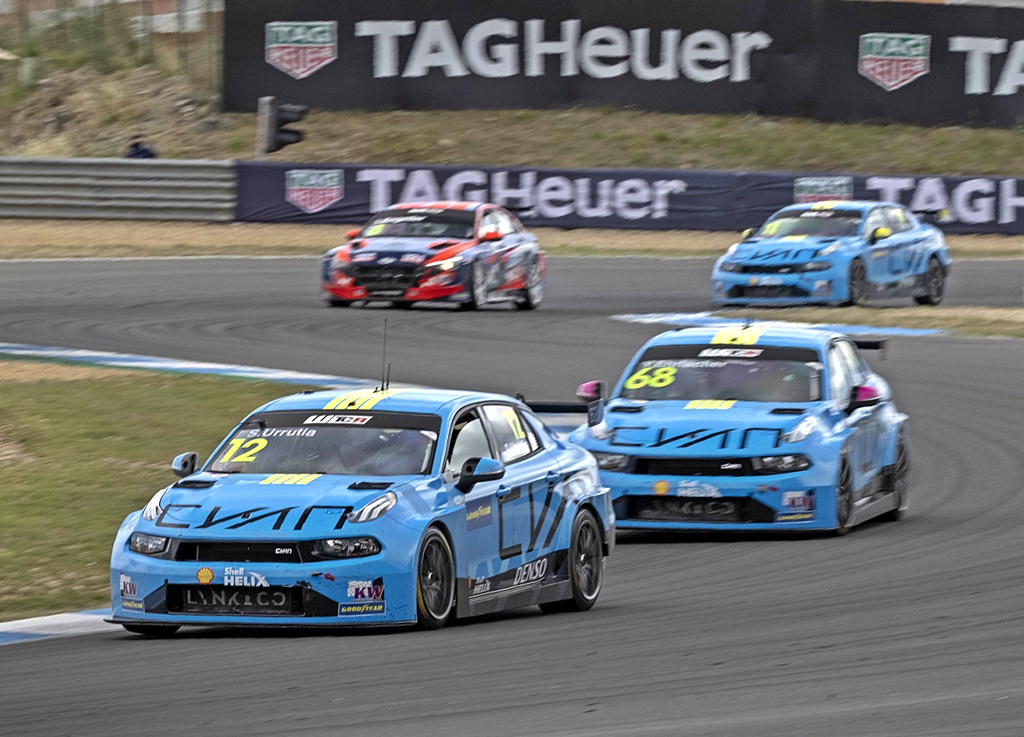
4-time champions
Cyan Racing became world champions for the fourth consecutive year in 2020, claiming a first double for Lynk & Co by securing both the Drivers’ and Teams’ titles. The 2021 WTCR season has been expanded from 6 to 8 race weekends for a total of 16 races in Europe and Asia, which started in June at the Nurburgring Nordschleife and will end in November at the classic Macau street circuit.
The team was founded in 1996 and was formerly named Polestar until Volvo Cars acquired the performance section and trademark in 2015. It was involved in the development of the Polestar performance models of the Volvo S60 and V60, as well as the concept models of the Volvo C30 and S60 Polestar Concept Prototype.
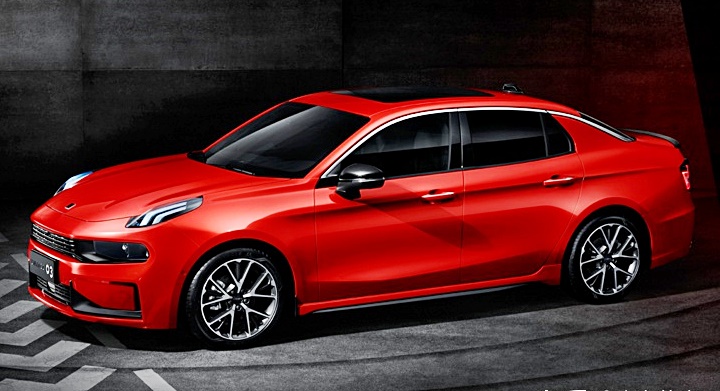

As reported earlier, Porsche will be setting up assembly operations in Malaysia, the first time the sportscar maker has produced its cars outside Germany. The company has confirmed that small-scale local assembly operation in Malaysia will join the company’s two other production sites – the original one at Zuffenhausen and the 19-year old one in Leipzig.
It is believed that the plan to assemble in Malaysia has been under consideration for at least 5 years though it was only early this year that it became known outside the company. There is interest in the Southeast Asian region which is unified under the ASEAN Free Trade Area (AFTA) and member nations have agreed to allow intra-ASEAN exchange of goods and service without import duties. The agreement was signed in the early 1990s and was implemented in the early 2000s.
Carmakers have welcomed the AFTA agreement which allows them to set up a large factory with big volumes in one country to make vehicles for the region. This allows good economies of scale compared to the situation before where each country had low-volume assembly plants to cater only for the domestic market. The regional approach lowers production costs which benefits consumers who get lower prices or better features with the money saved.
Porsche would have likewise seen a similar opportunity, especially since Volkswagen began assembly in Malaysia. However, the initial plan is to assemble in Malaysia from 2022 for the local market only but it’s almost certain that there will be exports later on. This will enable pricing of some models to be more attractive and competitive as they will not be subject to the high import duties that the countries impose for vehicles originating from outside ASEAN.
Sime Darby to be local partner
Not surprisingly, Porsche will have Sime Darby Berhad as its partner in local assembly. Sime Darby Auto Performance, a subsidiary of Sime Darby, also handles the Porsche brand in Malaysia and another subsidiary, Inokom, has an assembly plant in Kedah. Some of the brands assembled at the plant, which began operations in the 1990s, are BMW, MINI, Mazda and Hyundai. BMW engine assembly is also carried out by a subsidiary adjacent to the plant.
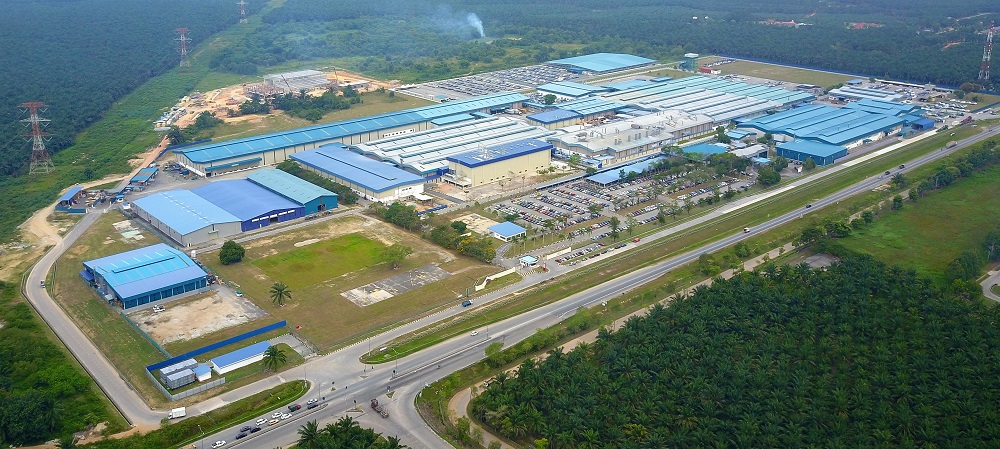
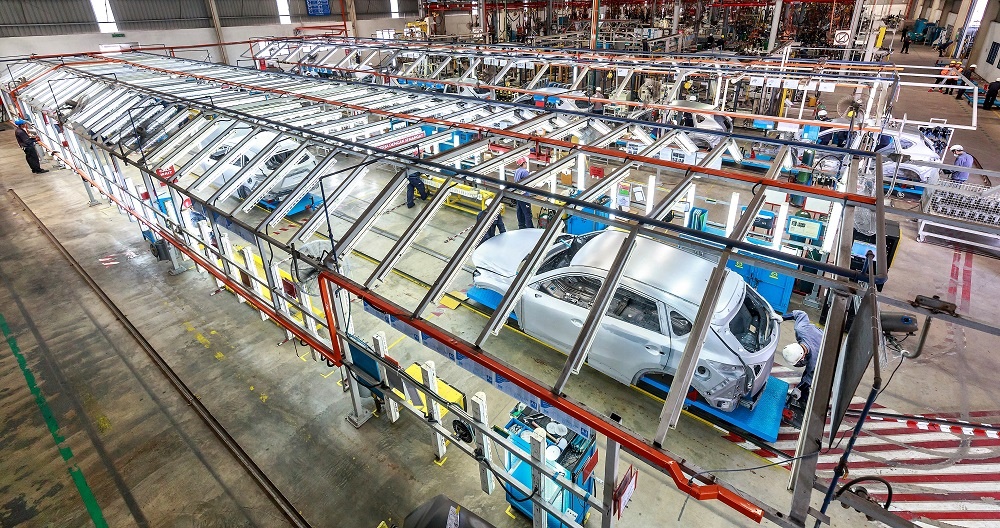
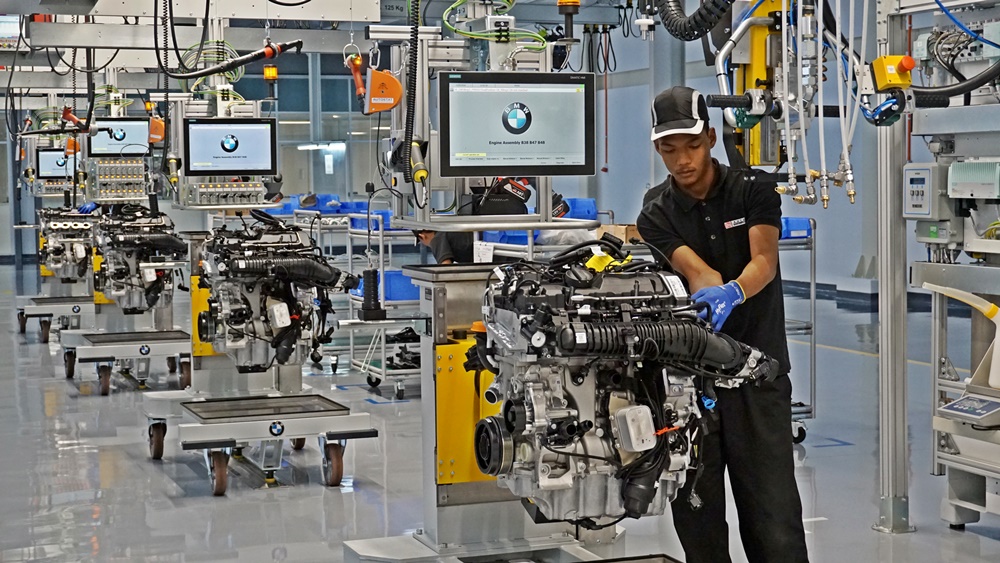
First Porsche production facility outside Germany
The local assembly operation will not only be something special for Malaysia but also for Porsche as it has never before had to have a CKD (completely knocked-down) process which is required for assembly overseas. It is not just a matter of picking a model and putting it into a box in disassembled form for assembly in another country. The model has also to be engineered for local assembly, taking into account the level of automation at the facility and capabilities of the workforce.
It is possible that the ‘SKD’ (semi knocked down) approach will be taken initially although this approach was stopped by the government in mid-2019. With SKD, bodyshells can be imported already welded together and in some cases, even painted. One thing that will prevent Porsche from exporting from Malaysia initially will be the requirement of 40% ASEAN content in each vehicle in order to qualify for the duty-free privilege. This usually takes while as suppliers have to be found or if they are new, then they will need time to also establish their operations.
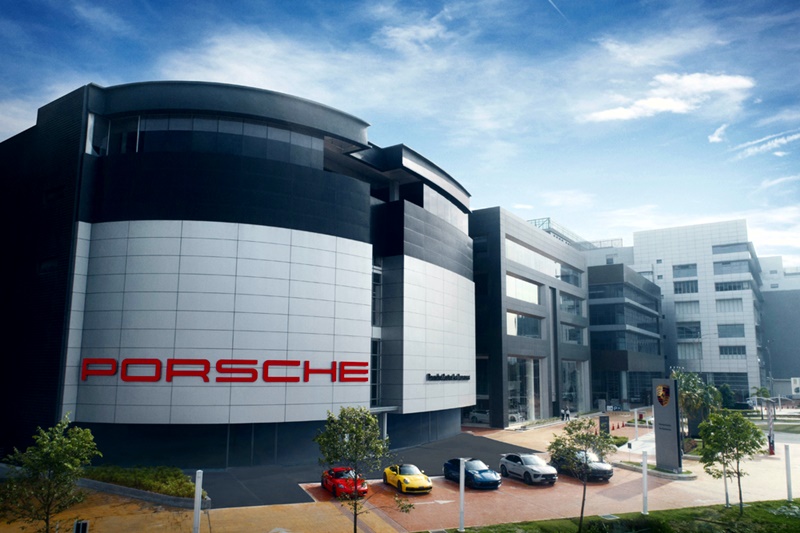
Willing to learn and adapt
“We’re fortunate that, due to careful planning, our existing factories are more than up to the task of meeting current and future global demand for our cars,” said Albrecht Reimold, Member of the Executive Board for Production and Logistics at Porsche. “However, the new assembly site in Malaysia meets specific market needs and, although a standalone project and modest in size and capacity, it signals our willingness to learn and adapt to specific local market conditions.”
“Malaysia and the whole ASEAN is a region of great potential, and we look forward to the first locally assembled models reaching our Malaysian customers next year,” added Detlev von Platen, Member of the Executive Board for Sales and Marketing at Porsche. “As Porsche is moving into a new era of mobility, Malaysia and the ASEAN region are gaining an increasing importance. This step now is part of a long-standing initiative to keep pace with rapidly evolving customer and market demands.”
Being the very first season ever, every location of the Extreme E championship series is a first and for the third round, the location in Kangerlussuaq, Greenland certainly presented an entirely different environment for the Arctic X Prix.
After consecutive overall wins by the Rosberg X Racing team in Saudi Arabia (Desert X Prix) and Senegal (Ocean X Prix), this third round was won by Andretti United Extreme E drivers Timmy Hansen and Catie Munnings.
In Extreme E’s first-ever 5-car final, British driver Munnings took the lead early on, until being passed by X44’s Sebastien Loeb, the Frenchman leading for the rest of the 8.6-km lap around a lake until the Switch Zone, while Munnings dropped behind Rosberg X Racing’s Molly Taylor.
The top three ran close into the Switch Zone area, the Andretti United car – the same all-electric ODYSSEY 21 E-SUV as everyone else – having re-taken second position, but X44’s challenge would be thwarted by a right-rear puncture, the wheel needing to be changed in the Switch Zone while Cristina Gutierrez climbed aboard the car.
Andretti United’s Hansen was first to leave the Switch Zone for the second lap, closely chased by RXR’s Johan Kristoffersson, the pair running side-by-side and spectacularly jumping high together over sections of the course, until the RXR car was slowed by technical issues from a jump landing and the Andretti United team ran free to claim its first victory.
Having won the Crazy Race earlier in the day, the JBXE team flew in the final, Kevin Hansen completing the first lap before handing the controls to Swedish compatriot Mikaela Ahlin-Kottulinsky and, fighting back from difficulties during qualifying, the pair finished second.
A solid run for ACCIONA | Sainz XE duo Carlos Sainz and Laia Sanz was rewarded with a podium finish in third, with X44 classified fourth and RXR fifth. The SEGI TV CHIP GANASSI RACING and Xite Energy Racing teams battled in the Crazy Race but didn’t make it through to the final.
“It feels awesome! It’s been a great afternoon and day! We’ve both had great races today and we had to work really hard for it. Catie did an amazing job both times. We both were involved in very close battles with the Rosberg X Racing car both times, it just feels incredible to be here,” said Timmy Hansen of Andretti United Extreme E.
“I loved the challenge of this course. I think it was really different to what we’ve seen before and a new challenge for the car as well. I think what was interesting was that it literally changed every time you saw it. Every car would chuck out massive rocks and so your line might not be there, so it was a very spontaneous style of driving and I also found it very hard to judge what the correct speed was, you have to think a lot more especially if you’re the first driver,” added Munnings.
The unforgiving Arctic X Prix course, combined with the series’ revised sporting format produced some of the most exciting racing yet with the 18 world-class drivers battling not only themselves, but the conditions and various track hazards en route to the finish line.
Adding an extra element of excitement to proceedings was the returning Super Sector, with the fastest driver over the course of the weekend earning themselves 5 extra points for the team.
Drawing attention to the mission of creating greater environmental awareness, JBXE’s Ahlin-Kottulinsky said: ”We are all living in this world and we all want to make a great future, so I think closing your eyes to what’s happening is not the right way. We all have to be open to see what is happening to the world and that is why Extreme E is trying new technologies and new ways to improve, we are all in this together and we all have to do this right. I think the fact that it is raining here in Greenland is as unusual as it would be in the desert and seeing how much rain we actually had this weekend is devastating so you can’t just close your eyes to it.”
From Greenland, the series will have its next round in Sardinia, Italy, on October 23/24. The move to Sardinia for the Island X Prix follows the decision to postpone its originally planned events in Brazil and Argentina due to the ongoing COVID-19 situation in South America.
“Extreme E was built around the ethos of racing electric vehicles in remote environments in an effort to raise awareness for climate change issues and showcase the performance and benefits of low carbon vehicles. However, this crisis is not a problem which only affects remote locations. It is becoming increasingly noticeable closer to home, across North America, and here across Europe, with rising temperatures, heatwaves and wildfires, which currently rage in Sardinia itself, being some of the latest devastating examples,” said Alejandro Agag, Founder and CEO of Extreme E.
Since the start of the series, the vehicles, participants and scientific facility for research work at each location have travelled on a specially refurbished cargo ship called the St. Helena. Efficiency is a major element of the ship with the engines running on low sulphur marine diesel and the propellers having reduced friction. 4,000 new low emission LED lights replace the old power intensive lighting, and there are new heating, ventilation and air conditioning systems.
